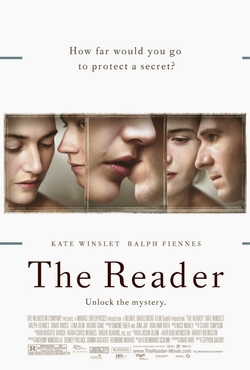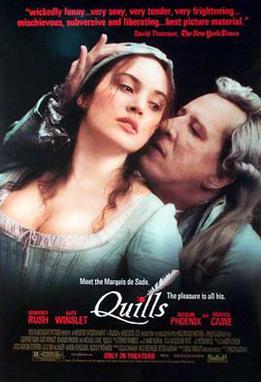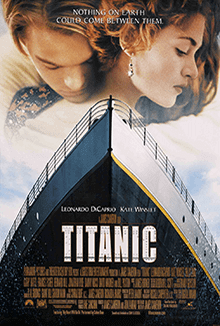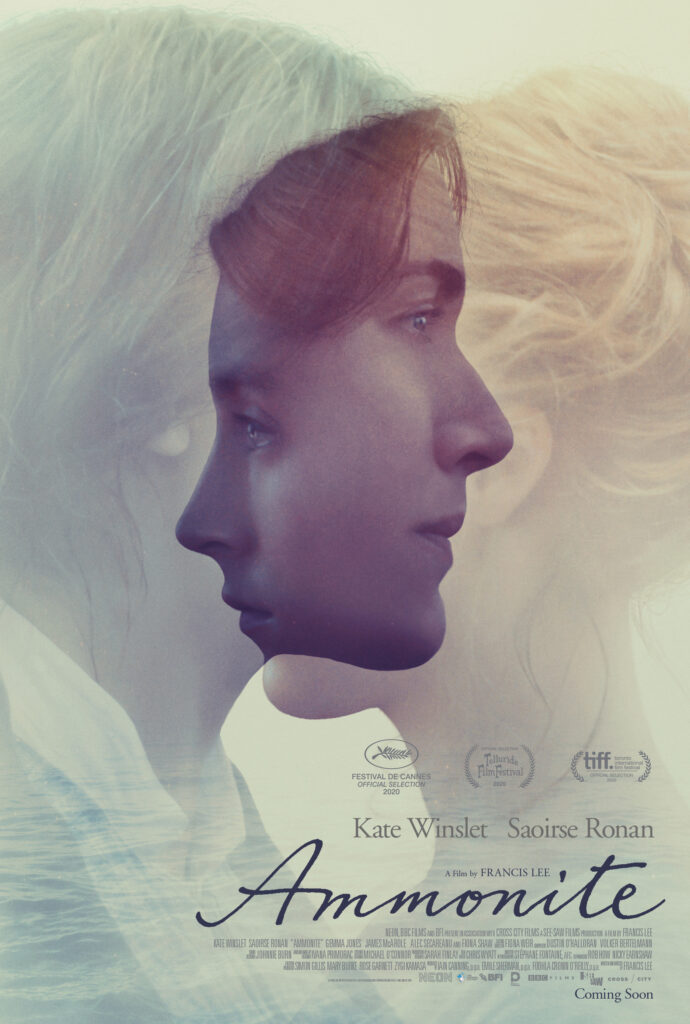
KATE WINSLET
CINERAMA

SCREEN CHARACTER BELEIVES IN HERSELF AND THE CHANGES SHE WANTS
By PETER THOMAS BUSCH
Kate Winslet takes on controversial roles that define the truth of the matter.
The characters created have genuinely heartfelt beliefs in the goodness of their convictions but the contemporary notions of the time put them in opposition.
Kate shows determination and resilience, anyway, and typically appears confident in the outcome. The plots become compelled forward because of an inner awareness of the limitations posed by potential outcomes, especially when the character carries on despite her own doubt.
Time is of no consequence for the character actor, as Kate chooses roles that range from the 1840 fossil hunter to the 1912 Titanic survivor to the 1950s provider in a nuclear family.
That genuinely felt conviction often finds the character in trouble with her contemporaries who do not share the same vision of the future.
You have to believe in yourself, especially when doubt comes trickling in – the character silently acknowledges with her on screen expressions.
In Titanic (1997) Kate plays the fiancé to a rich aristocrat destined for eternal happiness in America.
Rose DeWitt Bukater begins to feel the barriers built by the upper class tropes soon enough, such as gender discrimination and bigotry.
Rose struggles with the common limits of her life to be, and then only finds a new beginning just before the Titanic hits an iceberg in the middle of the Atlantic Ocean.
The change is too great too soon. And the sinking of the Titanic becomes a metaphor for the elusiveness of the life she had planned for her and Jack Dawson.

In Quills (2000) Kate plays a muse drifting about inside a Napoleonic Era insane asylum.
Madeleine becomes seduced by the biopic French political prisoner, The Marquis de Sade.
Kate shows that Madeleine believed in the prisoner’s humanity. And as a result, Madeleine helps The Marquis de Sade sneak manuscripts out of the hospital for publication. Joaquin Phoenix plays the priest managing the spiritual wellbeing of the patients.
In Revolutionary Road (2008) Kate rejoins her Titanic costar, Leonardo DiCaprio, as a husband and wife character team, with two children, spending their days in suburban America.
The modern housewife becomes convinced in the need for a role reversal that will save both of them from their boring suburban lives. The intuitive motivations become more fantasy as April finds herself pregnant again just as real change in their lives was about to occur.
In The Reader (2008) Hanna Schmitz walks through life as a public bus attendant in Post World War II Germany.
A young man finds his way to her, and both their lives become enriched. Director Stephen Daldy keeps the backstory a secret while the two characters explore their relationship together.
Hanna believes in the truth of her decision to have a relationship with a young man – and she appears a genuinely good person despite her choice.
This inner conviction in her own purpose does not change even when the dark telling of her backstory during the war begins to be told.
The authorities have begun the show trials of civilians complicit in murdering Jews in the Nazi concentration camp system. Hannah finds herself on the defensive about her involvement as an Auschwitz concentration camp guard. And Kate shows Hannah’s unsophisticated conviction in the truth of what she did.
To deny the truth is just as convincing as to find the truth, in this performance.
In The Life of David Gale (2003) Kate plays a journalist who becomes compelled to find the truth behind the death row conviction of a capital punishment abolitionist.
Bitsey Bloom is resilient in maintaining her objectivity in search of the truth, but her internal emotive devices get the best of her from time to time.
Director Alan Parker builds suspense in parallel with Bitsey’s ever increasing knowledge of the crime for which David Gale has been sentenced to death.
Kate shows how the truth always seems to be too illusive for justice, and the journalist, determined to maintain objectivity, finds one truth in exchange for another truth.
Often the character’s backstory explains that the character is not merely oppositional defiant, but that she has found challenging existing norms necessary for her own survival.
And the plots often turn just when that conviction begins to change potential outcomes.
Kate develops various nuances for this character from film to film. The search for the truth remains constant while the determination that change involves suffers from different forms of doubt.
The character maintains an authentic resolve, though.
In Lee (2024) Kate is cast in the lead role, with photographer Lee Miller initially trying to make people connections before becoming firmly decided on obtaining work with British Vogue.
Lee’s talent helps her break gender barriers in a time between the Great Wars of the last century when men and women were often segregated, especially in terms of employment and military duties.
The incremental scene progression takes on the aesthetic and intellectual qualities of still photography, creating time to absorb the subject and ponder what might have been going on and what might the subject have been thinking at the time of the composition.
Kate’s character becomes enthralled with the ability to show the truth through photographs.
The truth of being is ultimately what the screen character portrays. Kate moves the screen persona through various shades of the truth like peeling an onion one layer at a time. There is doubt in there and happiness, but also great sorrow and unfairness.


CHARACTER OVERCOME BY WAVES AND MUD
By PETER THOMAS BUSCH
Mary Anning dug about the mud and rocks and ocean waves of the Jurassic marine fossil beds as a young child with her father and brother.
Director Francis Lee dramatizes a short episode in Anning’s life, still mucking about and discovering various skeletons as an adult woman in Old England, but also a time for her when her inner life was much more complicated.
Kate Winslet plays Anning as an introverted scientist lacking a touch in social skills because she has spent too much time with books, drawings and fossils.
Anning also seems scarred by the back story of her difficult life growing up on the coast at Dorset in the 18th Century.
Lee keeps the narrative within a respectful timeframe without resorting to flashbacks or redirects into secondary narratives.
The fossil gardens are used as a narrative device with a slow moving script limited mainly to locations on the seaside and within Anning’s seaside residence.
Lee could have spent more time elsewhere with his camera, but he seems to have stayed in the fossil gardens with the fossils for a reason.
One of the first scenes is of Anning and her mother, Molly, played by Gemma Jones, sitting down for brunch after Mary returns from the beach mud with a fossil.
Molly cracks open a chicken egg with a partially developed chick embryo inside, and then throws it into the wood stove for incineration purposes.
Lee uses a score only sparingly, keeping instead the individual scene dramatizations simple like the simple life along the Atlantic Ocean. The sounds of the cold ocean wind, waves, and rain, contrasted with the crackling burning wood of a fireplace warming the inside of the seaside home, are used instead to fill in the scenes and compel the narrative forward.
Saoirse Ronan joins the cast as Charlotte Murchison. Murchison’s back story is provided as an example of relationships and marriage at a time when life was much more challenging, unequal and often unfair to women.
Ronan performs seaside melancholia. Ronan has been nominated for Oscars four times for performances in Little Women (2019), Lady Bird (2017), Brooklyn (2015) and Atonement (2007). Lee makes one intertextual reference to Lady Bird.
Winslet has seven nominations, including one win for her performance in The Reader (2009). Winslet of course shot to super stardom in the James Cameron blockbuster, Titanic (1997), co-starring Leonardo DiCaprio and Kathy Bates.
The acting fits well with the script, while Winslet and Ronan are cast well together.
Lee moves the film as if himself combing the sand, moving slow with intermittent expressions of solitude, such as close ups on seaside creatures, a bird, a crab and a beetle.
The genre is more of a period piece than a costume genre, although Lee shows how women were typecast by their clothes, with the daily dresses not suitable for mucking about digging for fossils. Even Anning, who seems to work full time in the marine fossil beds, does not dare to dawn trousers, etc.
Winslet and Ronan also explore the meaning of relationships, with marriage seeming a bit too constraining, and friendships between women still too formal.
Anning is portrayed as disassociated from the community and her neighbours, but the reason for that unfriendliness is not revealed to the audience.
Murchison’s daily presence with Anning begins to light up her inner soul, with flickers of emotions showing in her eyes beginning with the moment of their first sight of each other in Anning’s tourist shop. As Anning would say in another context, ‘there might be something there or there might be nothing there.
Murchison needs a doctor after developing a fever from an impromptu swim in the frigid waters off the Atlantic. Dr. Lieberson, played by Alec Secareanu, recommends bed rest. And the good doctor persuades Anning to provide Murchison with daily care.
As a result, Anning and Murchison gradually form a bond that leads to a sexual relationship. Lee has been criticized for over dramatizing the script as the historical record does not indicate that Anning was a lesbian. Unfortunately, Lee has manipulated Anning’s life story for the purpose of commercialization in theatres and streaming.
And so, Lee has missed an opportunity here, and he instead seems to have dialed everything down a bit too much to suit his fossilized narrative device.